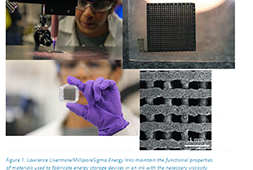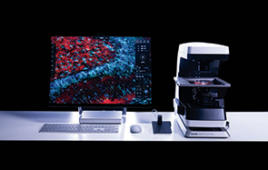Inspired by the Japanese art of paper folding (origami), researchers at TU Delft are developing an alternative to 3D printing that allows the final products to have many more functionalities than what is possible with 3D printing. Those additional functionalities could, for instance, be used in medical implants or devices incorporating flexible electronics. In their publication in Science Advances on Nov. 29, the scientists have successfully applied their technique to lattice structures.
Lattice structures are used in the design of so called “metamaterials,” to achieve unusual physical, mechanical, or biological properties. Examples are ultra-light yet ultra-stiff materials, fluid-like solids, and materials with ultrahigh energy absorption (impact resistance) properties. These metamaterials derive their properties not from the properties of the base materials, but from the complex geometry of their lattice structures. So far, lattice structures could be only made with 3D printing processes, which limited their functionalities. The research group led by Professor Amir Zadpoor at TU Delft has shown for the first time how to use origami techniques to fold complex lattice structures from flat sheets.
To incorporate advanced functionalities into metamaterials, the surface of the lattice structures may need to be ornamented with special features such as surface nano-patterns or electronic devices. The alternative approach of starting from a flat shape (instead of 3D printing) allows for incorporation of those functionalities that generally could only be applied to flat shapes. Advanced micro- and nano-patterning techniques such as electron beam nanolithography allow for free-form patterning of surfaces. “However, they generally work only on flat surfaces,” says Zadpoor. “Moreover, our access to the internal surface areas of 3D-printed lattice structures is very limited.”
“Combining free-form surface ornaments with lattice forms seemed therefore impossible. But, inspired by the Japanese art of paper folding (origami), we have found a way that does allow for that combination. We have proposed the unusual approach of ‘folding’ lattice structures from initially flat states. That approach provides us with full access to the entire surface of what will eventually become our lattice structure. We could then use the currently available techniques to ornament the surface. We have categorized lattices into three basic categories and, for each of those, have proposed a folding strategy. Self-folding mechanisms have been also incorporated into the flat material to allow for self-folding into the final lattice shape,” says Zadpoor.
The folding mechanism is activated (for instance by a change in temperature) to enable folding of the flat sheet and the formation of complex 3D structures. The lattice structures could bear arbitrarily complex surface ornaments at different scales. “We show how free-form 3D ornaments could be applied on the surface of flat sheets with a resolution of a few nanometers.”
There are several areas where the proposed approach could be used for creating metamaterials with advanced functionalities. One specific area is the development of (meta-)biomaterials that stimulate tissue regeneration. Another example of the potential areas of application is integration of flexible electronics (for example, sensors and actuators) in the design of metamaterials.
Source: TU Delft




